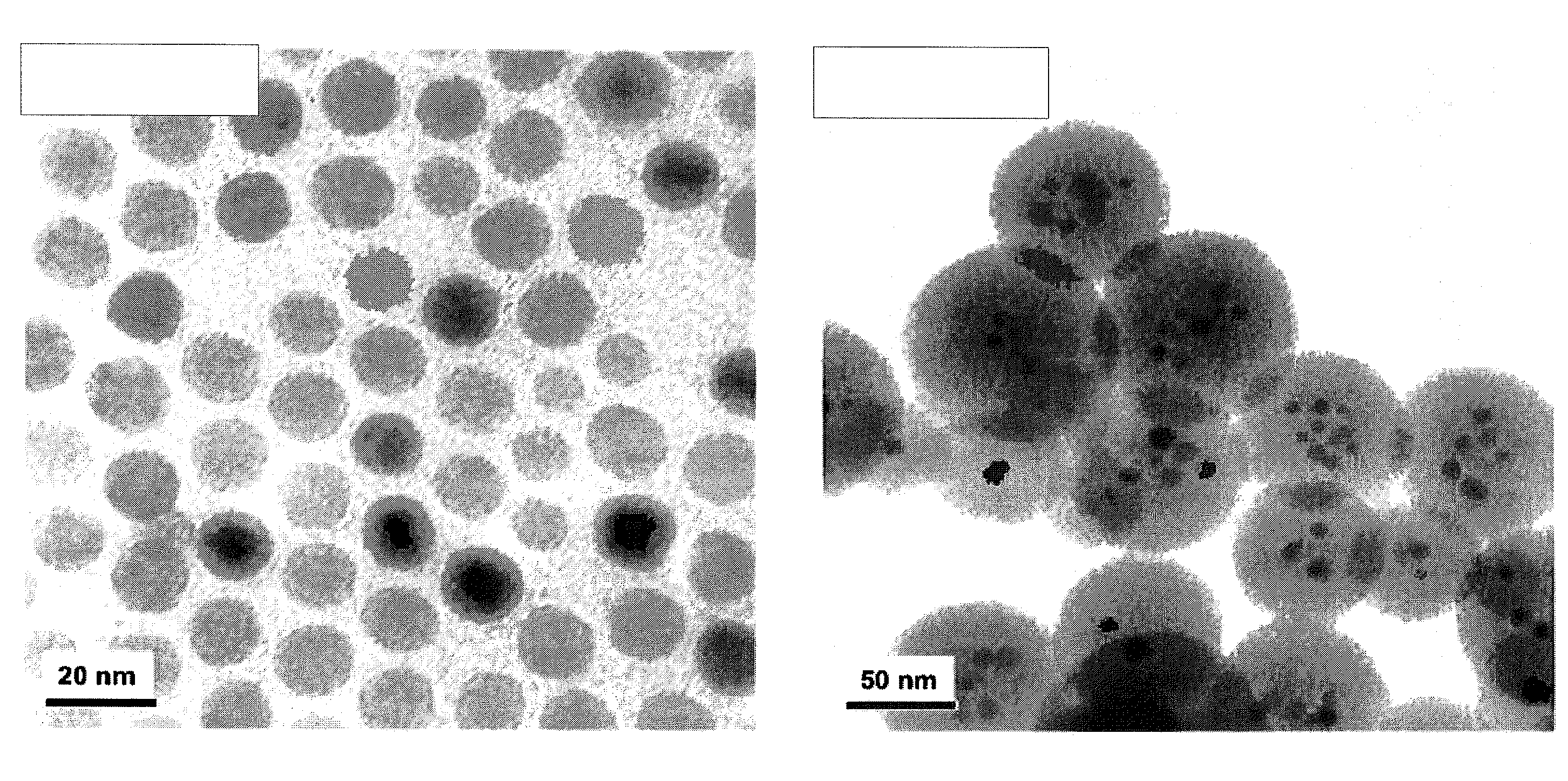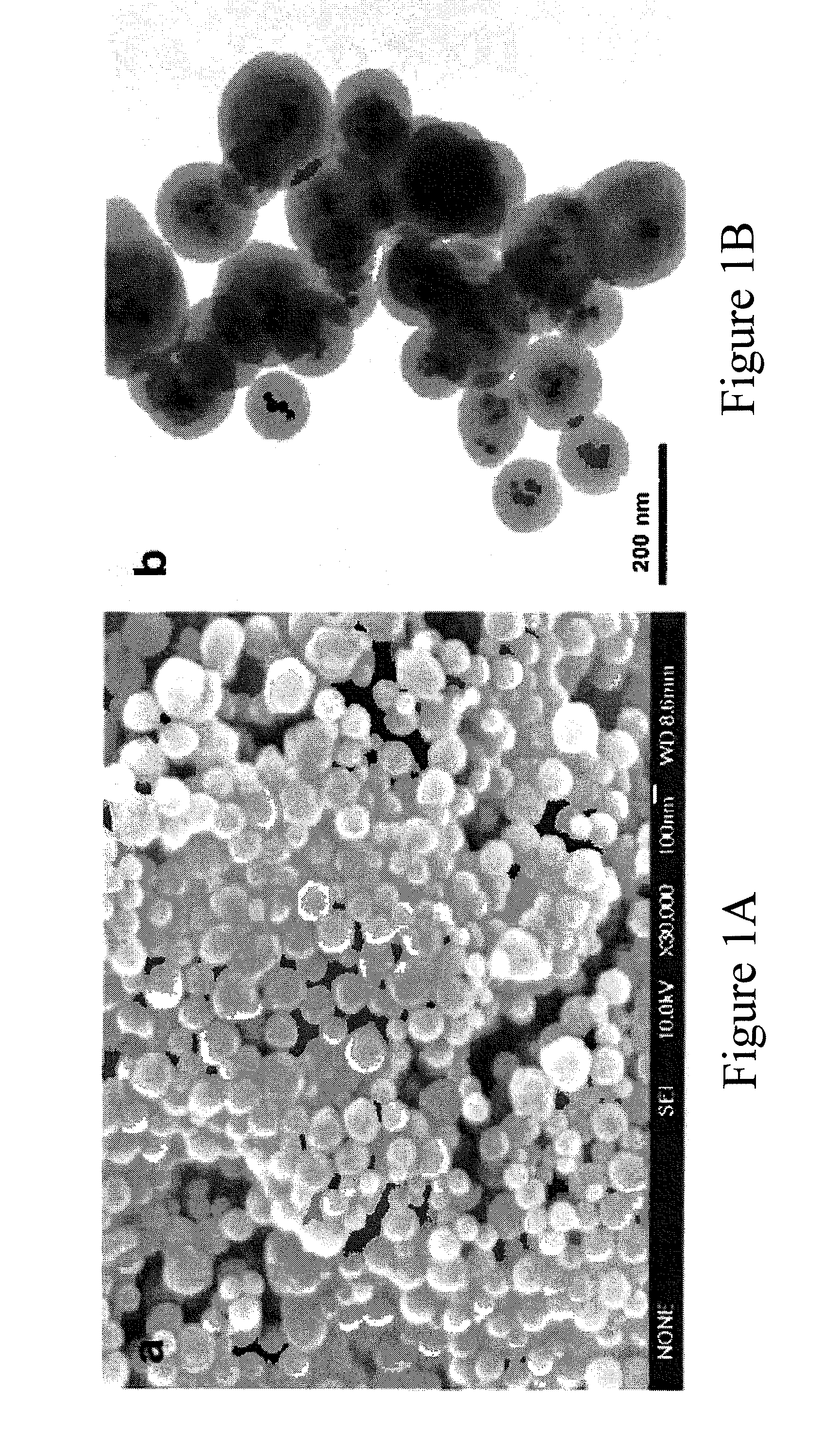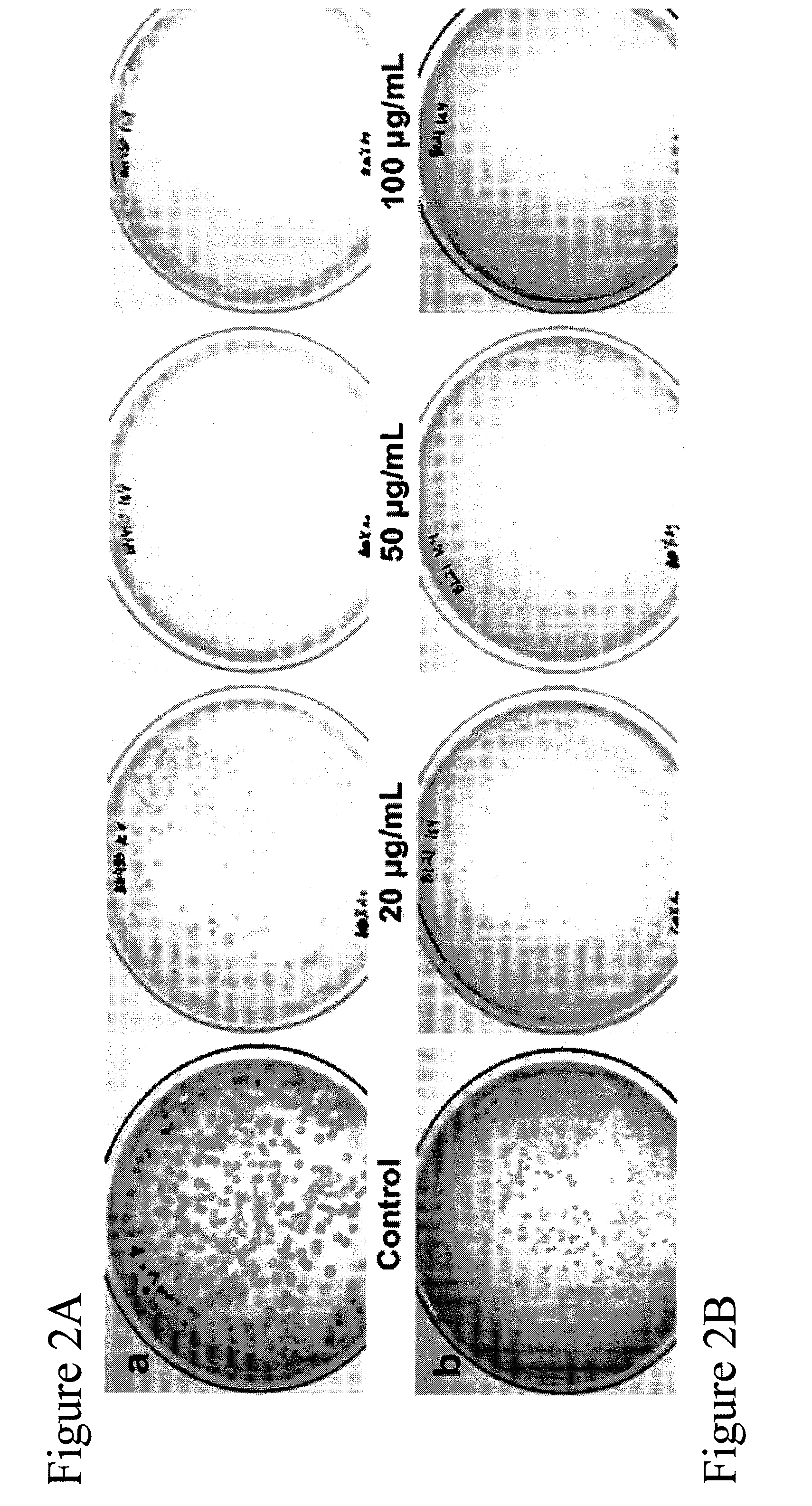Structured silver-mesoporous silica nanoparticles having antimicrobial activity
a technology of mesoporous silica and nanoparticles, which is applied in the field of silver-mesoporous silica nanoparticles with antimicrobial activity, can solve the problems of disrupting the membrane function of single-celled microorganisms, disrupting cell functions, and disrupting respiratory functions
- Summary
- Abstract
- Description
- Claims
- Application Information
AI Technical Summary
Benefits of technology
Problems solved by technology
Method used
Image
Examples
example 1
Synthesis of Silver Nanocrystals
[0095]The hydrophobic silver nanocrystals used as the seed template were synthesized through a modified non-hydrolytic process. (Hiramatsu et al., Chem. Mater. 2004, vol. 16, p. 2509) In comparison to the aqueous phase synthesis which requires large amounts of solvents (Pal et al., Appl. Environ. Microbiol, 2007, vol. 73, p. 1712), the non-hydrolytic method is more suitable since it requires inexpensive reagents and yields larger quantities of products. The reduction of silver acetate with oleylamine at high temperature resulted in spherical oleylamine-capped silver nanocrystals that are less than 20 nm in diameter (FIG. 7). Silver acetate (50 mg, Sigma, 99%) was dissolved in oleylamine (2.5 mL, Aldrich, 70%) and quickly added into a boiling solution of toluene (50 mL). The mixture was refluxed and stirred vigorously for 12 h under nitrogen. After removing the toluene using rotary evaporation, methanol was added into the solution to precipitate the si...
example 2
Synthesis of Silver Encapsulated Mesoporous Silica Nanoparticles (Ag@MESs)
[0098]The Ag@MESs were prepared by mixing CTAB-stabilized silver nanocrystals with the silica source, tetraethylorthosilicate (TEOS), in a basic aqueous solution (˜pH 11). The electrostatic interaction between hydrolyzed TEOS molecules, CTAB-stabilized nanocrystals, and free surfactant micelles quickly led to the formation of mesostructured particles (Fan et al., Science, 2004, vol. 304, p. 567). Since the particle morphology is highly dependent on the reaction condition, the solution is stirred vigorously and heated at high temperature (−80° C.) to form the yolk-shell structured nanoparticles. The electron microscope images in FIG. 1 shows the Ag@MESs in which multiple silver nanocrystals are embedded at the center of the spherical mesoporous silica structure. An ion-exchange procedure of heating the particles in an ethanolic solution of ammonium nitrate was used to remove the toxic CTAB surfactants (Lang et ...
example 3
Synthesis of Superparamagnetic Nanoparticles
[0100]Superparamagnetic iron oxide nanocrystals were synthesized by following the modified procedure described by Park et al. (Nat. Mater. 2004, vol. 3, p. 891). The iron oxide nanocrystals were synthesized by the thermal decomposition of iron-oleate complex in nonpolar solution. 2.2 g iron (III) chloride hexahydrate and 7.4 g sodium oleate were dissolved in a mixture of 16.3 mL absolute ethanol and 12.2 mL water, and mixed with 28.5 mL hexane; the solution was refluxed for 4 h. The mixture was then washed with water several times in a separatory funnel and the hexane was removed from the mixture by using rotary evaporation. The synthesized iron-oleate complex was then dried under vacuum overnight. 1 g of iron-oleate complex was dissolved in a solution of 177.3 μL oleic acid and 7.1 mL octadecene. The mixture was placed under vacuum and heated at 80° C. for 30 min. It was then stirred vigorously under inert atmosphere and heated to 320° C....
PUM
 Login to View More
Login to View More Abstract
Description
Claims
Application Information
 Login to View More
Login to View More - R&D
- Intellectual Property
- Life Sciences
- Materials
- Tech Scout
- Unparalleled Data Quality
- Higher Quality Content
- 60% Fewer Hallucinations
Browse by: Latest US Patents, China's latest patents, Technical Efficacy Thesaurus, Application Domain, Technology Topic, Popular Technical Reports.
© 2025 PatSnap. All rights reserved.Legal|Privacy policy|Modern Slavery Act Transparency Statement|Sitemap|About US| Contact US: help@patsnap.com



